@
- This paper aims to solve the need for the front-end to read the table file, obtain the file content and render to the interface without calling the back-end interface
- My other articles can address expansion requirements:
- Perform automatic cell merging after reading the parsed table
- After reading the parsing table, the cell color is automatically set according to the data comparison and analysis
- After reading the analysis table, perform data analysis (dialysis) to generate the eckarts diagram that can meet the user-defined needs
- Download interface table function
explain
The company usually has a lot of background management systems, and similar requirements are very common. I have written similar posts, but they only put code and never write comments and steps. Hey hey, don't say much. This article is a complete record:
premise
I often use:
Ant Design + Angular
Element UI + Vue
Ant Design + Vue
For convenience, today we use Element UI + Vue
Start directly based on Vue element admin
Code warehouse
1.Code cloud address
2.github address
Step 1: preparation
- Click to enter Vue element admin Download

- Download and unzip
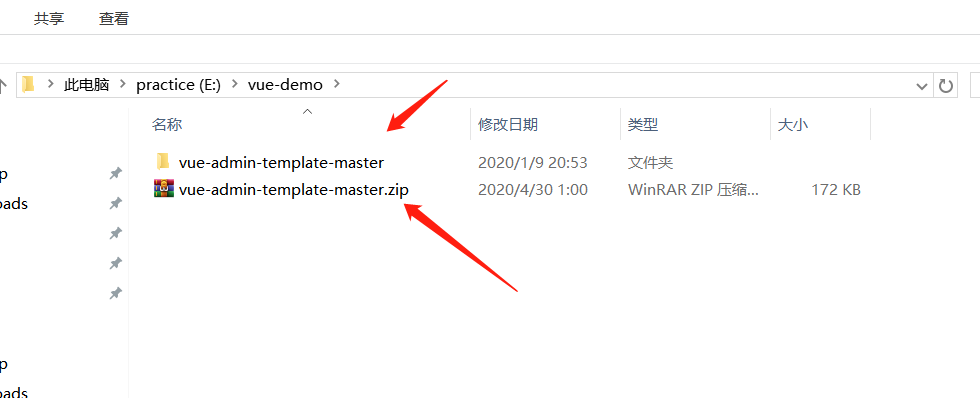
- Installation and operation

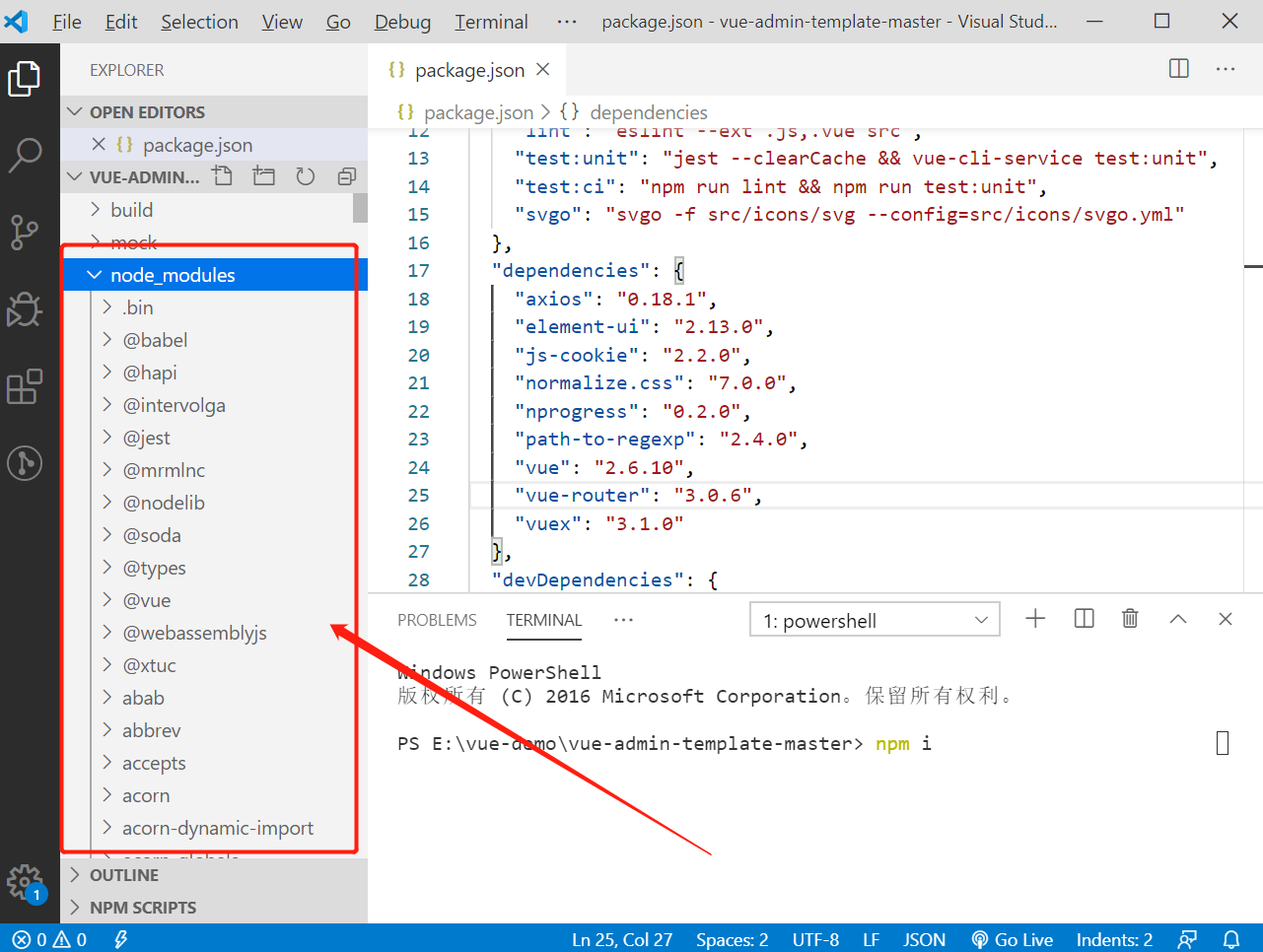
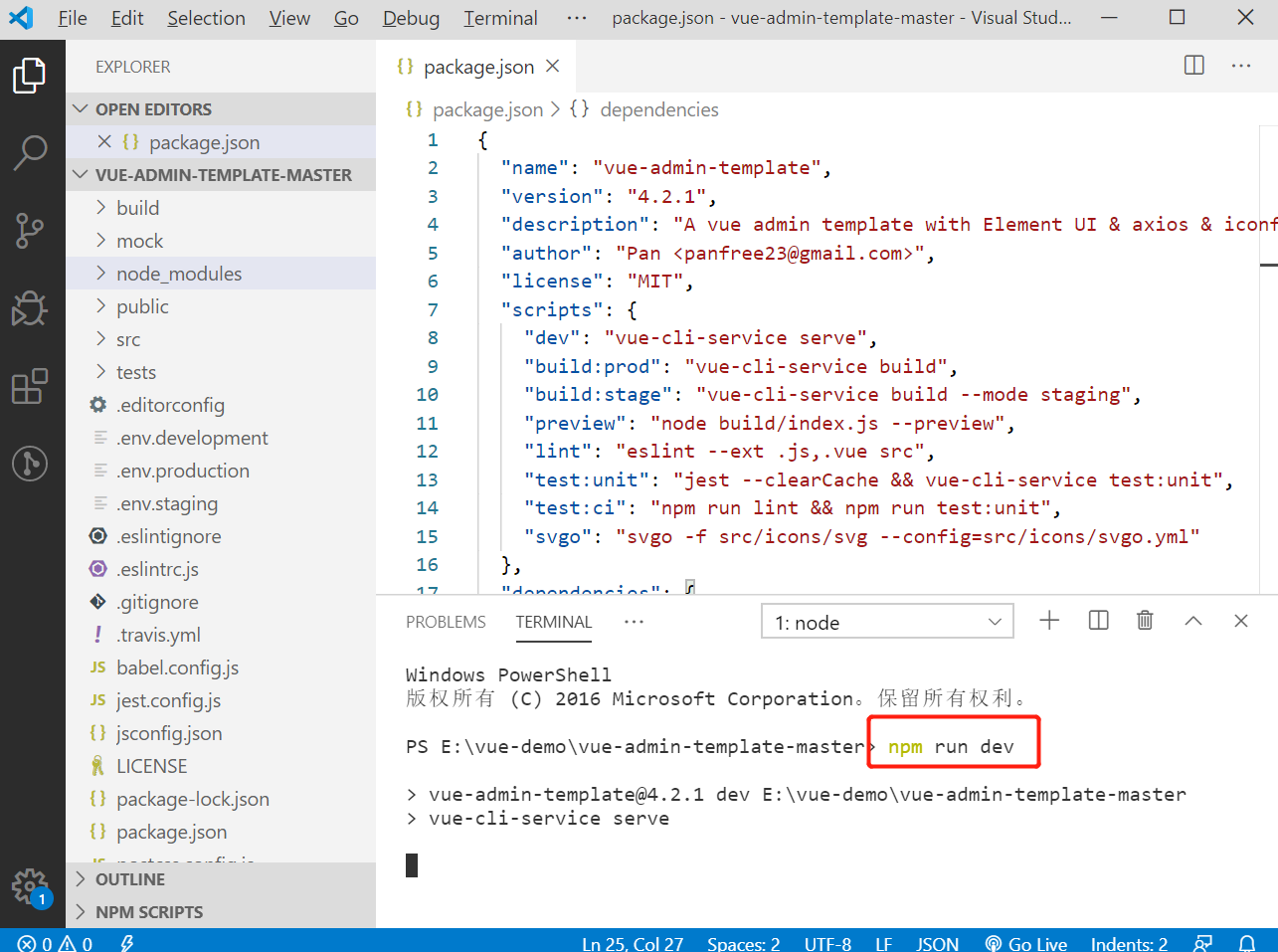
- Run successfully

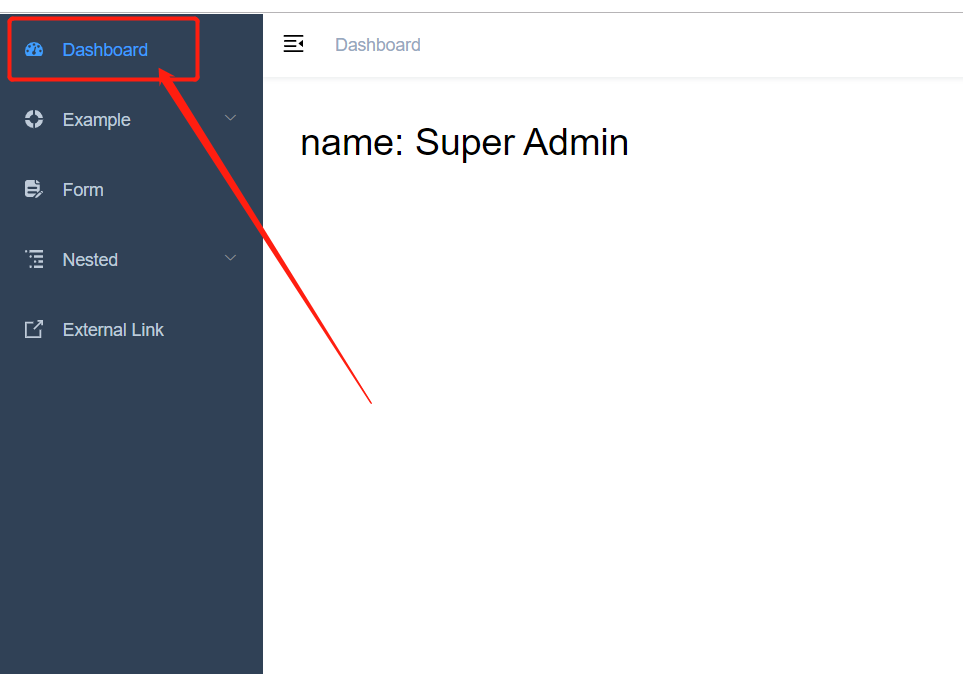
Step 2: import table parsing
- Enter the following path;
src\views\dashboard\index.vue
- Delete useless code and prepare to start;
<template>
<div class="dashboard-container">
</div>
</template>
<script>
export default {
name: 'Dashboard'
}
</script>
<style lang="scss" scoped>
</style>
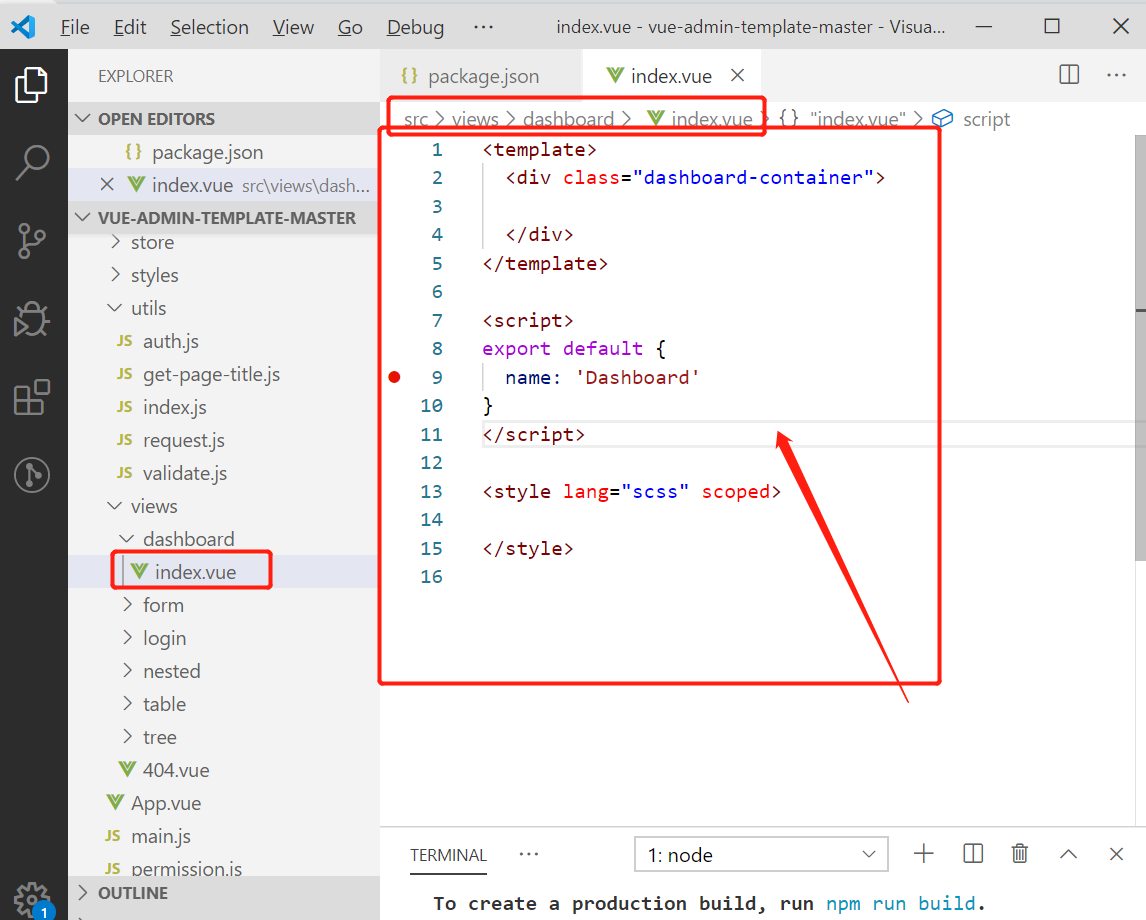
- Add the import button to save and refresh;
<template>
<div class="dashboard-container">
<!-- Import button -->
<div class="button_group">
<a
href="javascript:;"
class="button_s my_file el-button button_s el-button--primary el-button--small"
>
<input type="file" class="my_input" @change="importExcel" id="upload" />Import
</a>
</div>
<!-- Import button -->
</div>
</template>
<script>
export default {
name: 'Dashboard',
methods: {
/**
* Import table
*/
importExcel(e) {
}
}
}
</script>
<style lang="scss" scoped>
// Button style
.button_group {
.button_s {
width: 78px;
margin: 5px 10px 5px 5px;
}
.button_m {
width: 100px;
margin: 5px 10px 5px 5px;
}
.my_file {
position: relative;
.my_input {
position: absolute;
opacity: 0;
width: 78px;
height: 30px;
top: 0;
left: 0;
}
}
}
// Button style
</style>
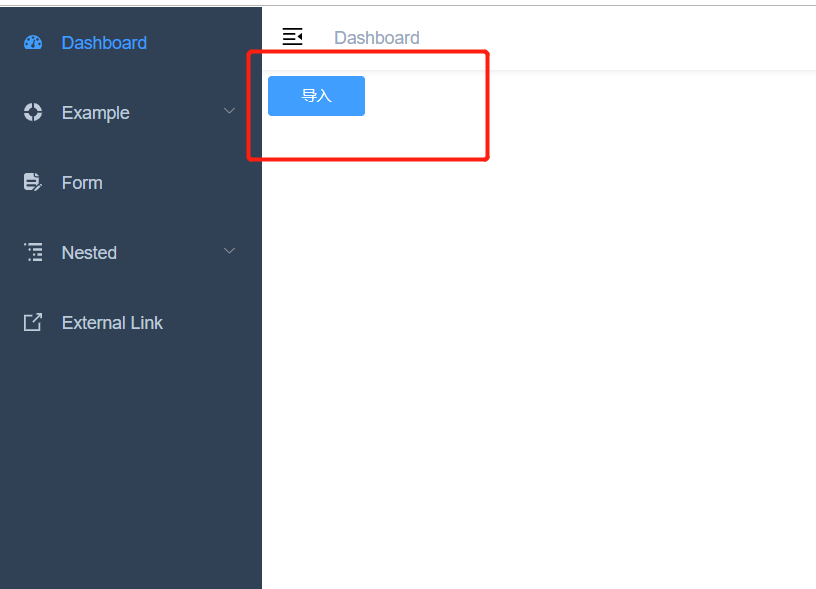
-
Download xlsx and import;
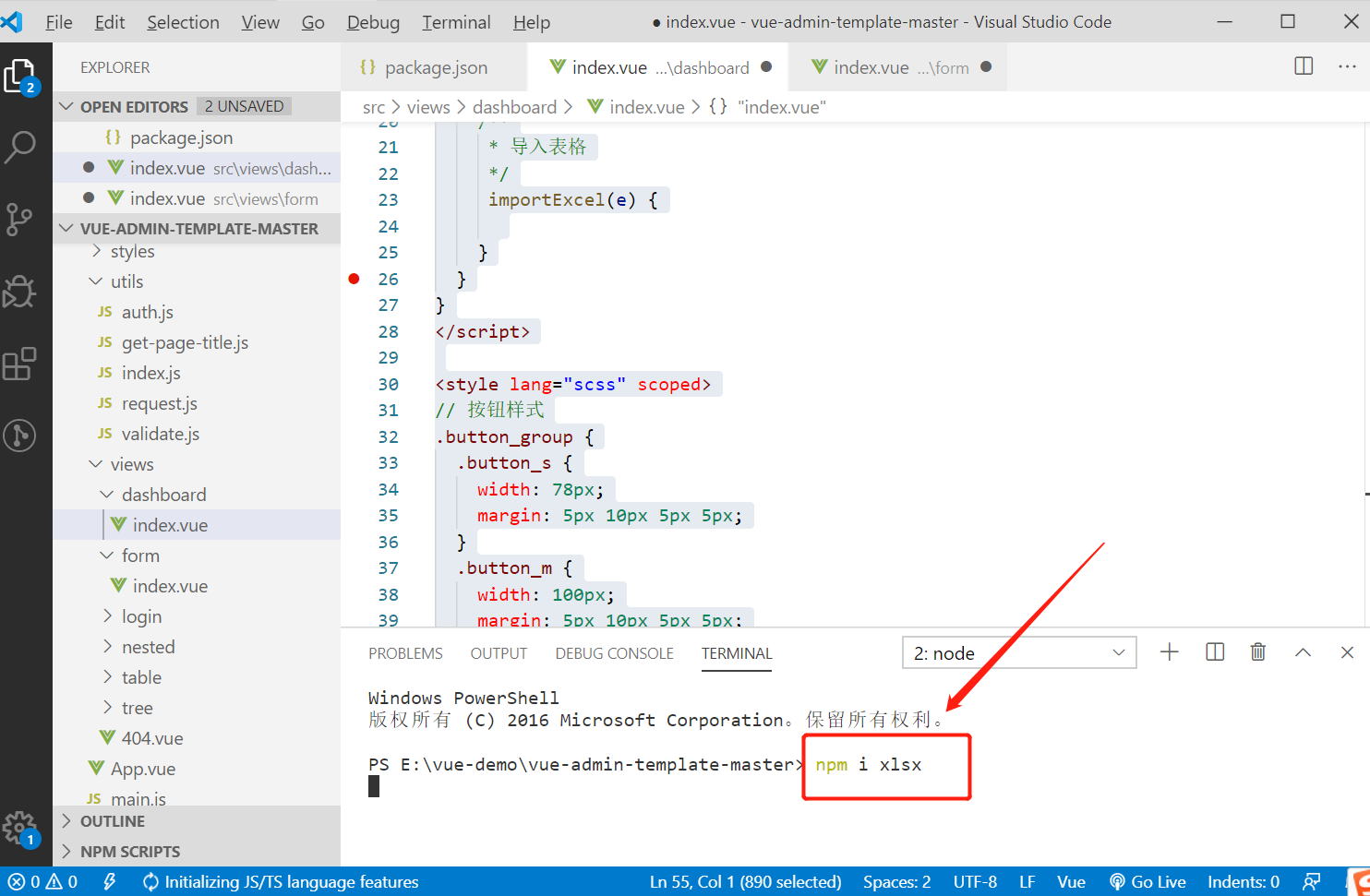
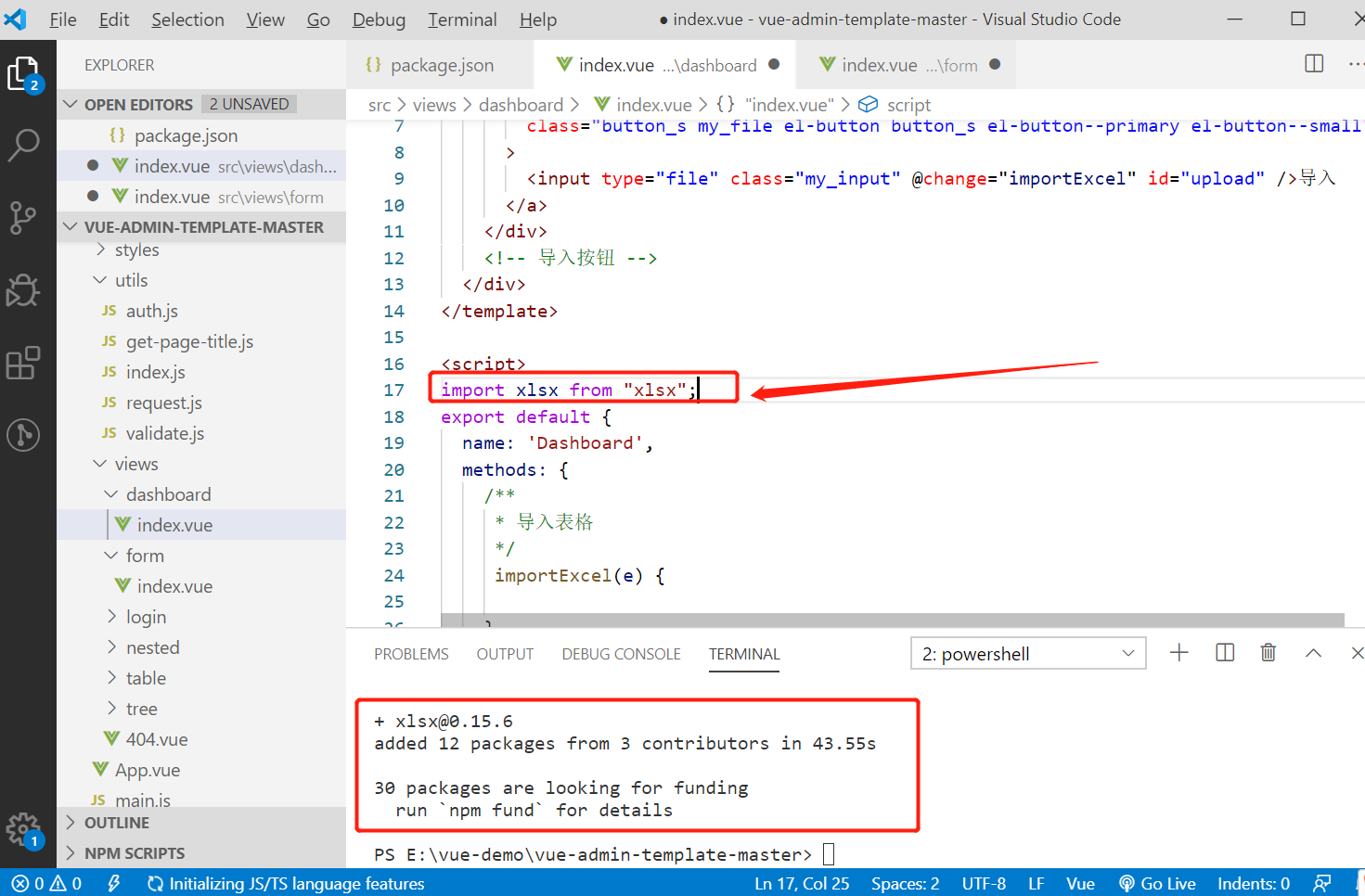
-
Write import form function, save and refresh;
<script>
import xlsx from "xlsx";
export default {
name: 'Dashboard',
methods: {
/**
* Import table
*/
importExcel(e) {
const files = e.target.files;
console.log(files);
if (!files.length) {
return ;
} else if (!/\.(xls|xlsx)$/.test(files[0].name.toLowerCase())) {
return alert("The upload format is incorrect, please upload xls perhaps xlsx format");
}
const fileReader = new FileReader();
fileReader.onload = ev => {
try {
const data = ev.target.result;
const XLSX = xlsx;
const workbook = XLSX.read(data, {
type: "binary"
});
const wsname = workbook.SheetNames[0]; //Take the first table, WB Sheetnames [0] is the name of the first Sheet in the Sheets
const ws = XLSX.utils.sheet_to_json(workbook.Sheets[wsname]); //Generate json table content, WB Sheets [Sheet name] get the data of the first Sheet
const excellist = []; //Clear received data
//Edit data
for (var i = 0; i < ws.length; i++) {
excellist.push(ws[i]);
}
console.log("Read results", excellist); // At this point, you get an array of objects that need to be processed
} catch (e) {
return alert("read failure!");;
}
};
fileReader.readAsBinaryString(files[0]);
var input = document.getElementById("upload");
input.value = "";
}
}
}
</script>
-
Write the following table to test the function;
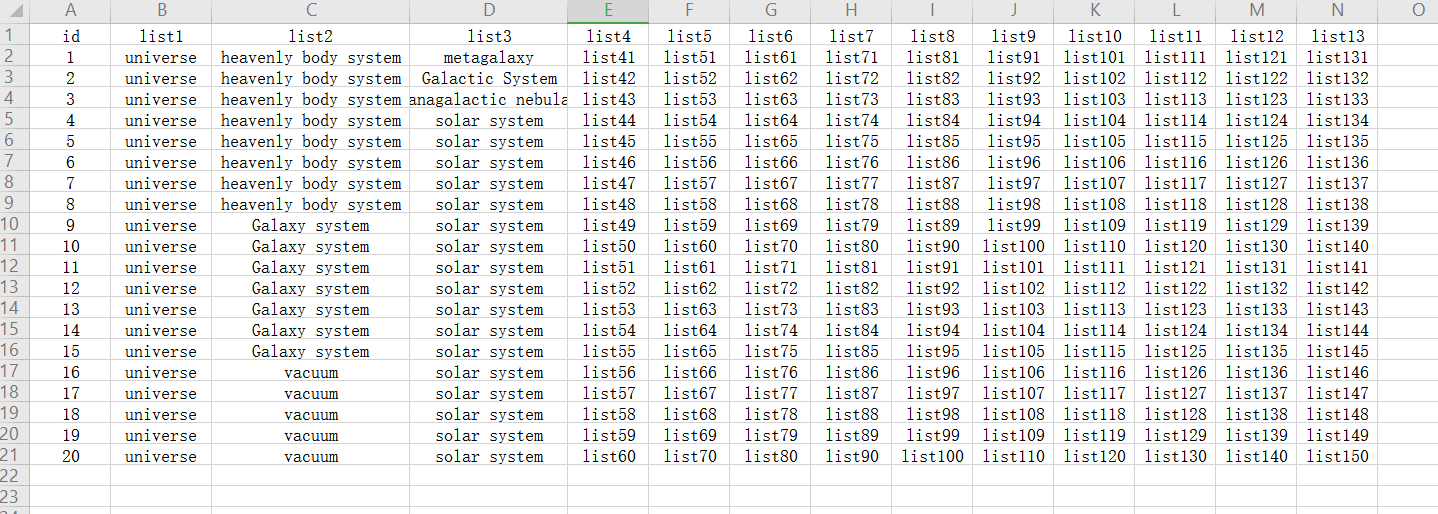
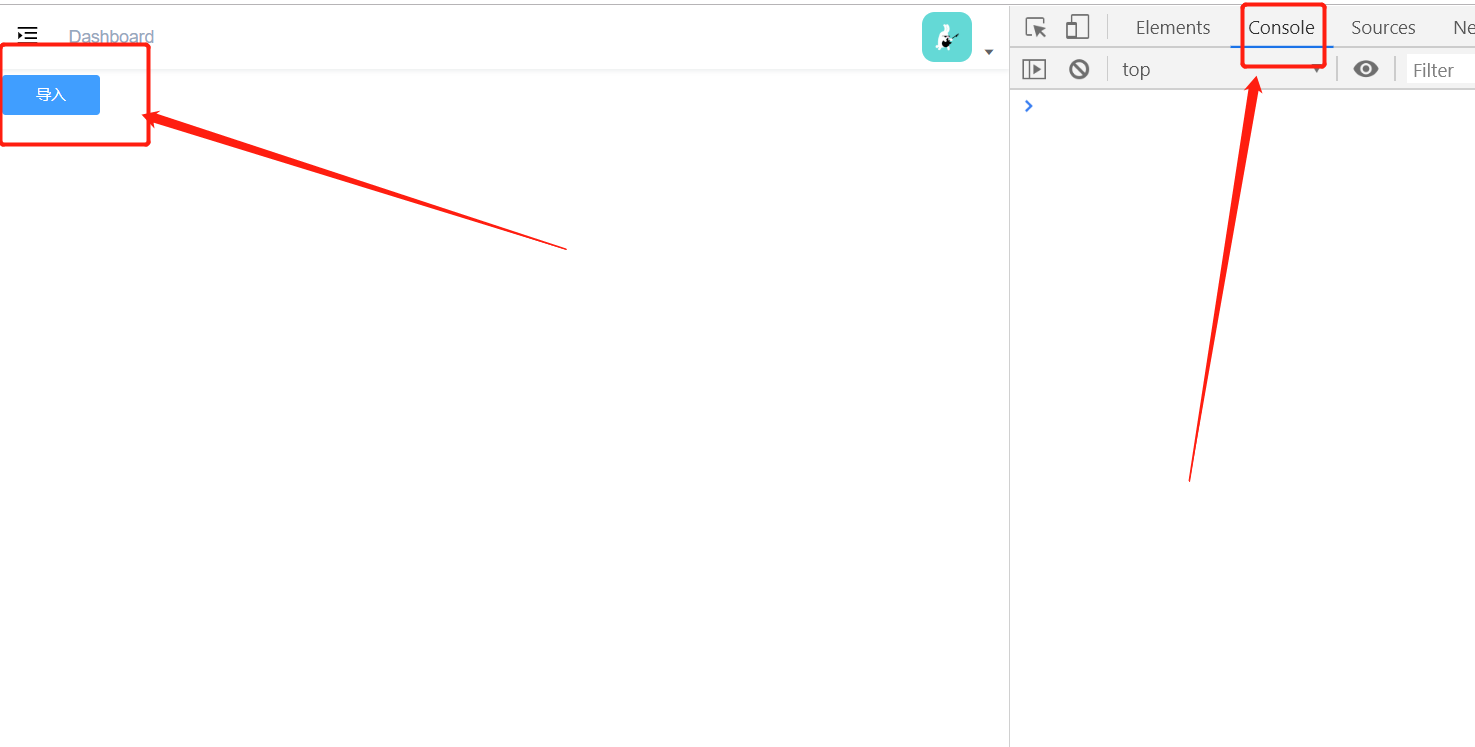

-
Sometimes, the title of the form is Chinese. If we want to get the English attribute name after reading, add the following code and test again;
<script>
import xlsx from "xlsx";
export default {
name: 'Dashboard',
methods: {
getHeader(sheet) {
const XLSX = xlsx;
const headers = [];
const range = XLSX.utils.decode_range(sheet["!ref"]); // worksheet['!ref'] is a valid range of worksheets
let C;
/* Get cell value start in the first row */
const R = range.s.r; // Row / / column C
let i = 0;
for (C = range.s.c; C <= range.e.c; ++C) {
var cell =
sheet[
XLSX.utils.encode_cell({ c: C, r: R })
]; /* find the cell in the first row */
var hdr = "UNKNOWN" + C; // If there is an empty header, it will be replaced with the default value you want replace with your desired default
// XLSX.utils.format_cell generates a cell text value
if (cell && cell.t) hdr = XLSX.utils.format_cell(cell);
if(hdr.indexOf('UNKNOWN') > -1){
if(!i) {
hdr = '__EMPTY';
}else {
hdr = '__EMPTY_' + i;
}
i++;
}
headers.push(hdr);
}
return headers;
},
/**
* Import table
*/
importExcel(e) {
const files = e.target.files;
console.log(files);
if (!files.length) {
return ;
} else if (!/\.(xls|xlsx)$/.test(files[0].name.toLowerCase())) {
return alert("The upload format is incorrect, please upload xls perhaps xlsx format");
}
const fileReader = new FileReader();
fileReader.onload = ev => {
try {
const data = ev.target.result;
const XLSX = xlsx;
const workbook = XLSX.read(data, {
type: "binary"
});
const wsname = workbook.SheetNames[0]; //Take the first table, WB Sheetnames [0] is the name of the first Sheet in the Sheets
const ws = XLSX.utils.sheet_to_json(workbook.Sheets[wsname]); //Generate json table content, WB Sheets [Sheet name] get the data of the first Sheet
const excellist = []; //Clear received data
//Edit data
for (var i = 0; i < ws.length; i++) {
excellist.push(ws[i]);
}
console.log("Read results", excellist); // At this point, you get an array of objects that need to be processed
// Get header 2-1
const a = workbook.Sheets[workbook.SheetNames[0]];
const headers = this.getHeader(a);
console.log('headers', headers);
// Get header 2-2
} catch (e) {
return alert("read failure!");;
}
};
fileReader.readAsBinaryString(files[0]);
var input = document.getElementById("upload");
input.value = "";
}
}
}
</script>
We change the form to irregular state, save and open the interface for test
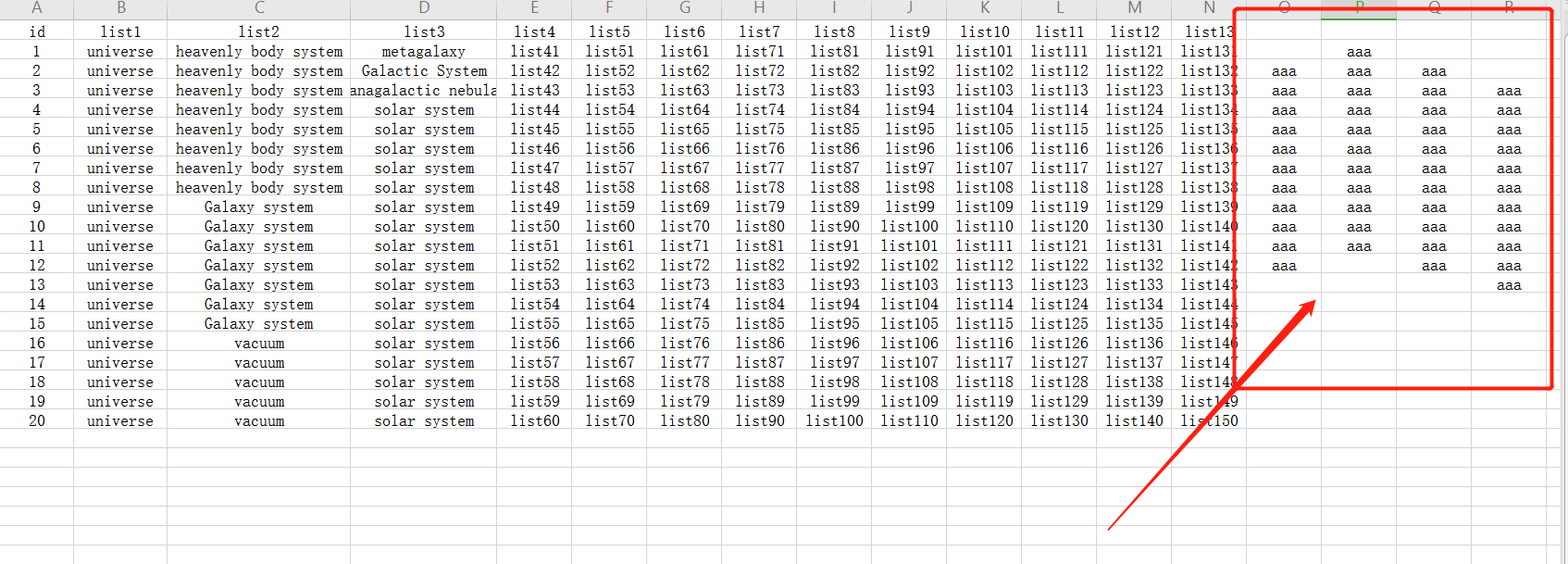
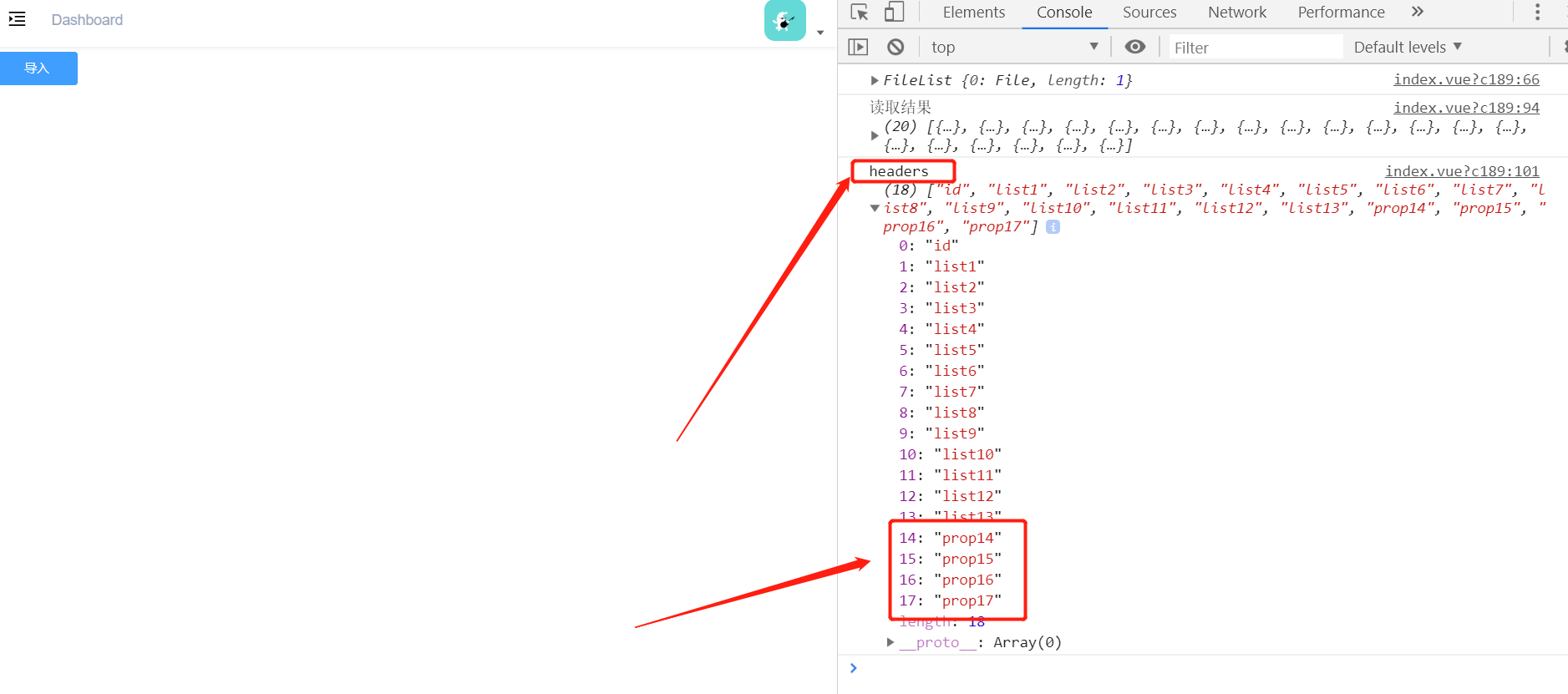
Step 3: realize table rendering
- Add table components to the interface.
<!-- Table component -->
<div class="myTable">
<el-table
max-height="600"
:data="dataArr"
v-loading="tableLoading"
:span-method="objectSpanMethod"
border
style="width: 100%"
>
<el-table-column
:prop="item.prop"
:label="item.label"
:width="item.width"
v-for="(item, i) in tableColumn"
:key="i"
></el-table-column>
</el-table>
</div>
<!-- Table component -->
data() {
return {
dataArr: [], // Table content data array
// countArr: {}, / / analyze the table data and header to get a cross reference array for user-defined merging. This article only writes the basics for the time being, and does not introduce the automatic merging of cells ~ ~ my other articles have written the implementation method of user-defined merging~
tableColumn: [], // Table header configuration array
tableLoading: false // Is the form loading
};
},
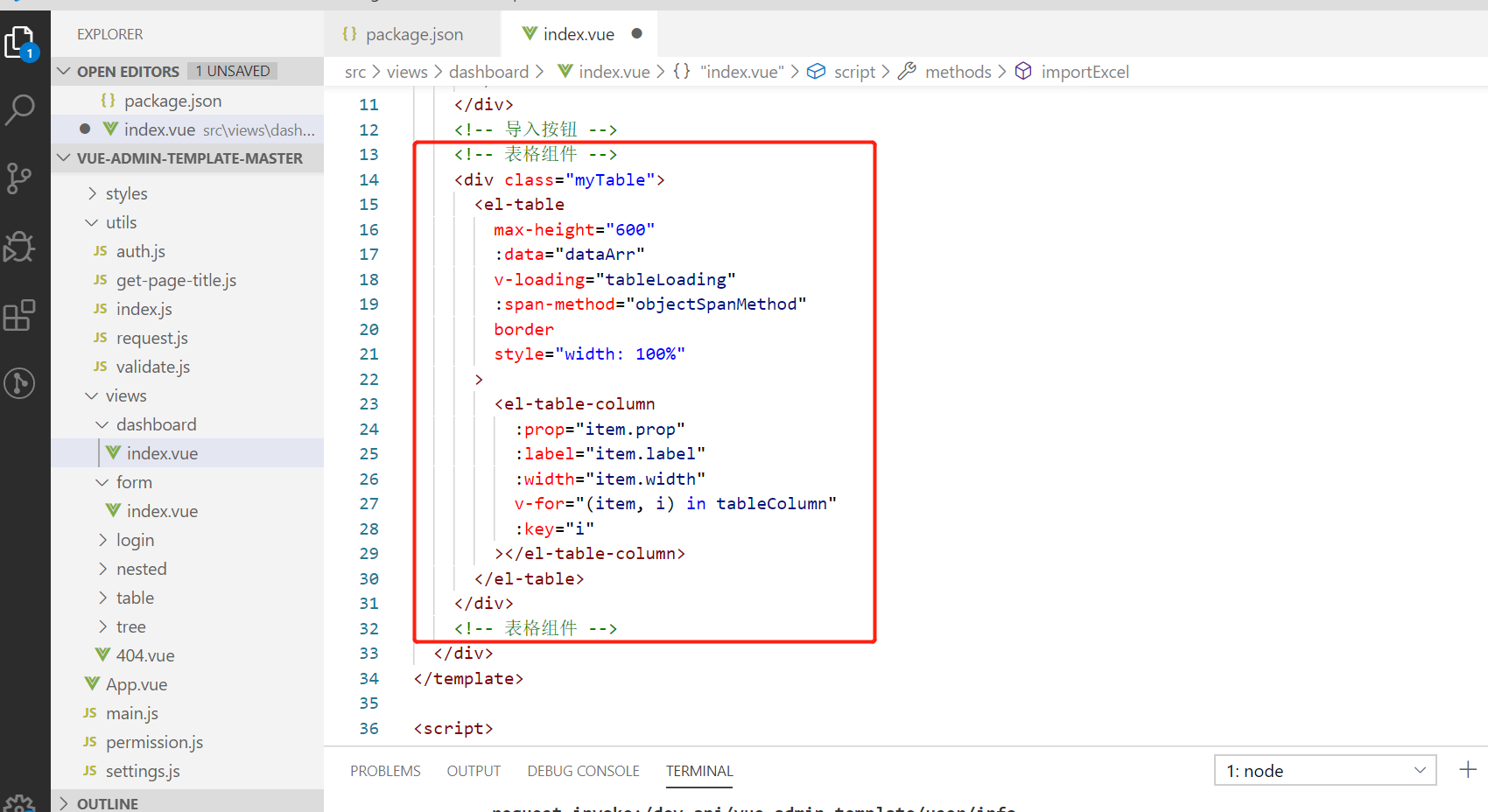
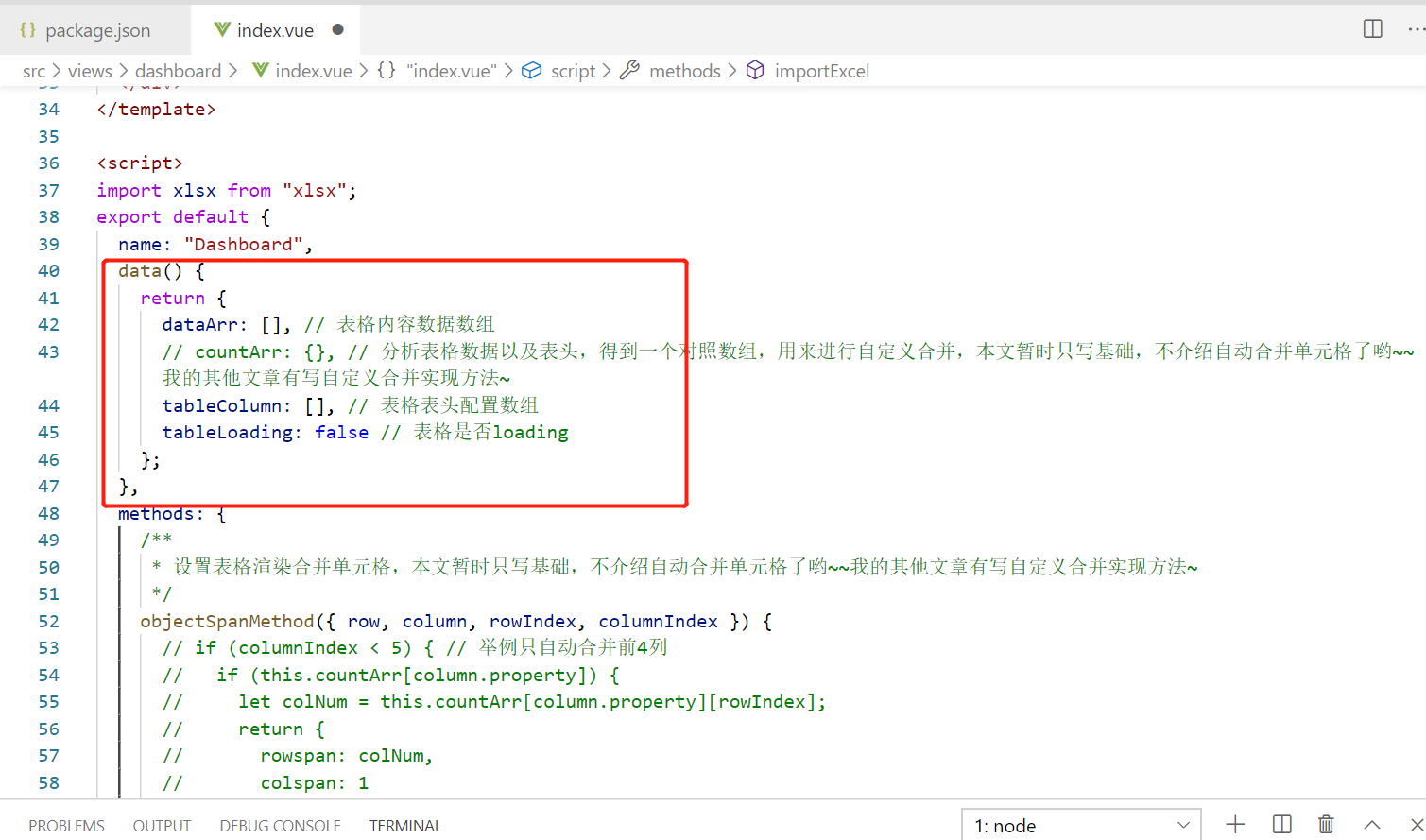
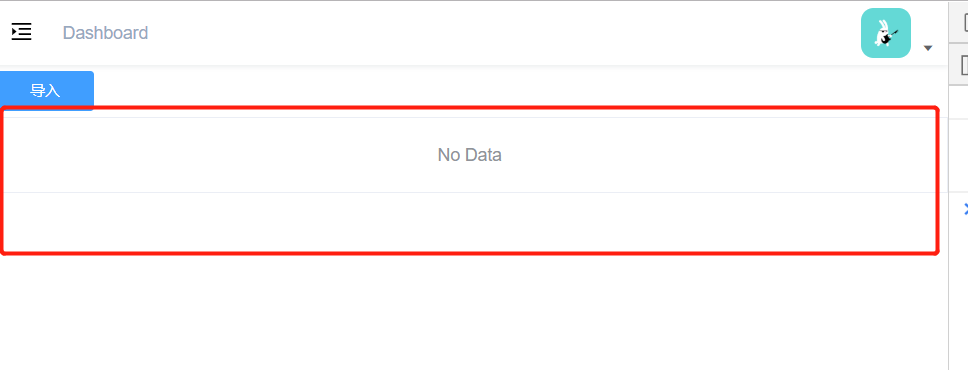
2. Add table rendering method.
Note: some codes in the table rendering method are used to map Chinese and English attribute names. This is a function I added. Sometimes it doesn't need to be used. You can modify the code according to your own needs;
setTable(headers, excellist) {
const tableTitleData = []; // Store table header data
const tableMapTitle = {}; // Set the table content in both Chinese and English
headers.forEach((_, i) => {
tableMapTitle[_] = "prop" + i;
tableTitleData.push({
prop: "prop" + i,
label: _,
width: 100
});
});
console.log("tableTitleData", tableTitleData);
// The mapping table content attribute name is English
const newTableData = [];
excellist.forEach(_ => {
const newObj = {};
Object.keys(_).forEach(key => {
newObj[tableMapTitle[key]] = _[key];
});
newTableData.push(newObj);
});
console.log('newTableData',newTableData);
this.tableColumn = tableTitleData;
this.dataArr = newTableData;
},
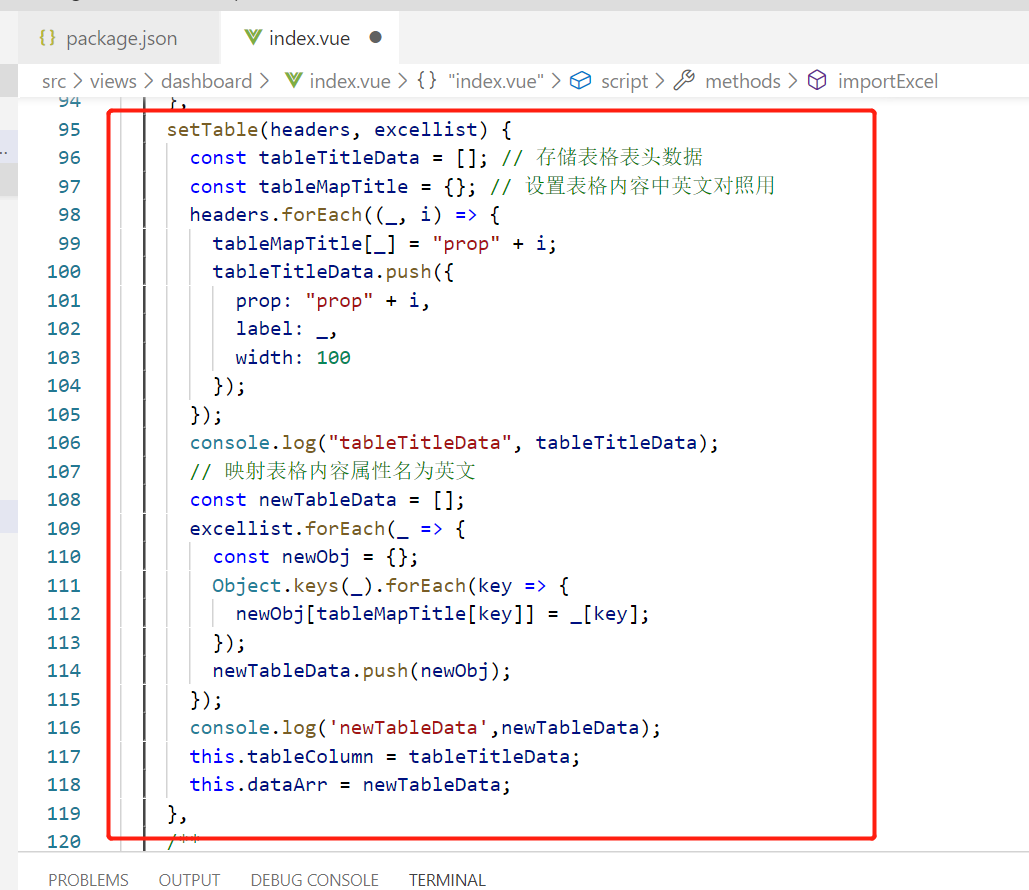
- Call the table rendering method.
// Add the following code to the importExcel(e) method
// Rendering Table 1-1
this.setTable(headers, excellist);
// Rendering table 1-2
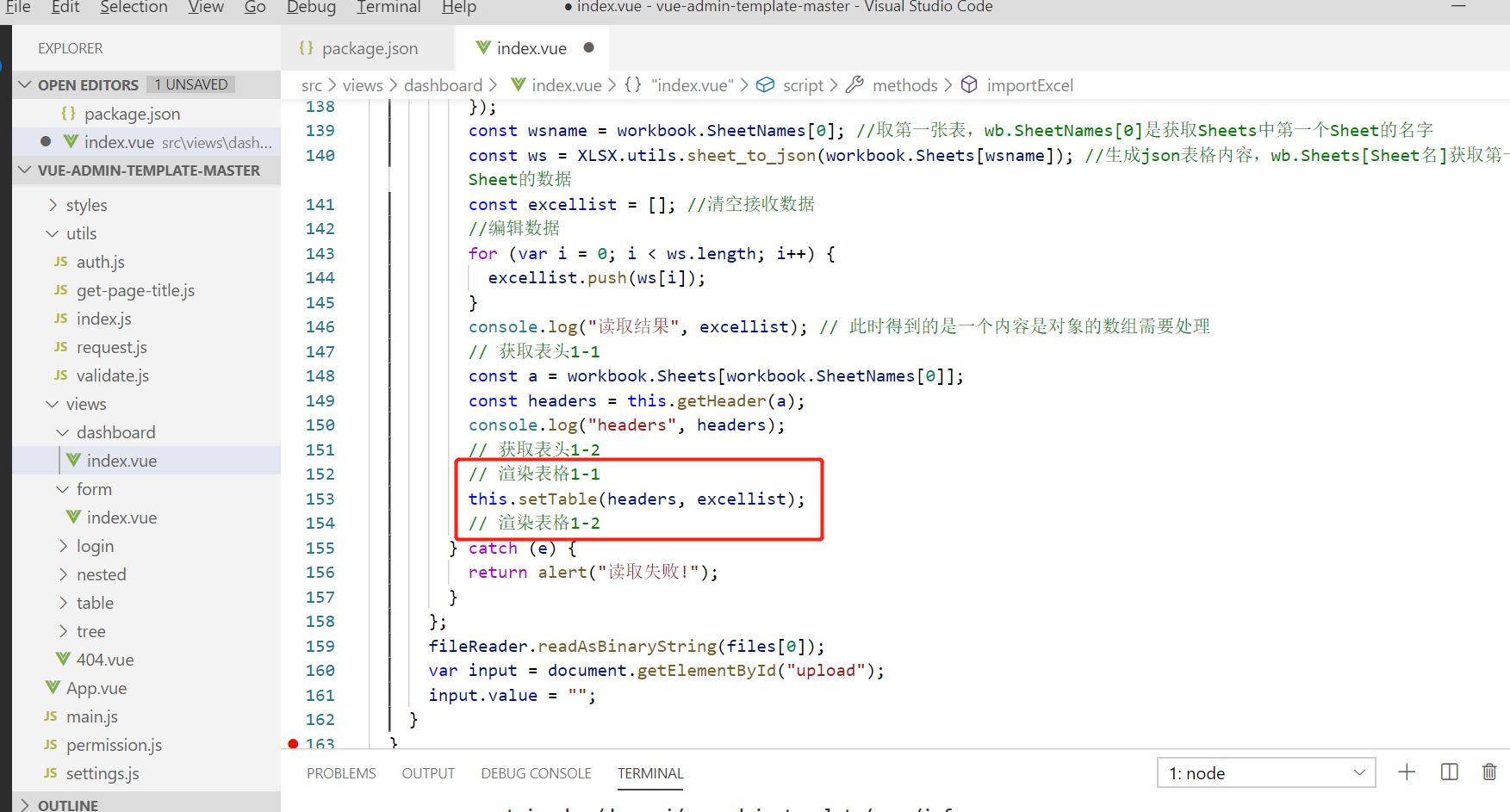
- functional testing
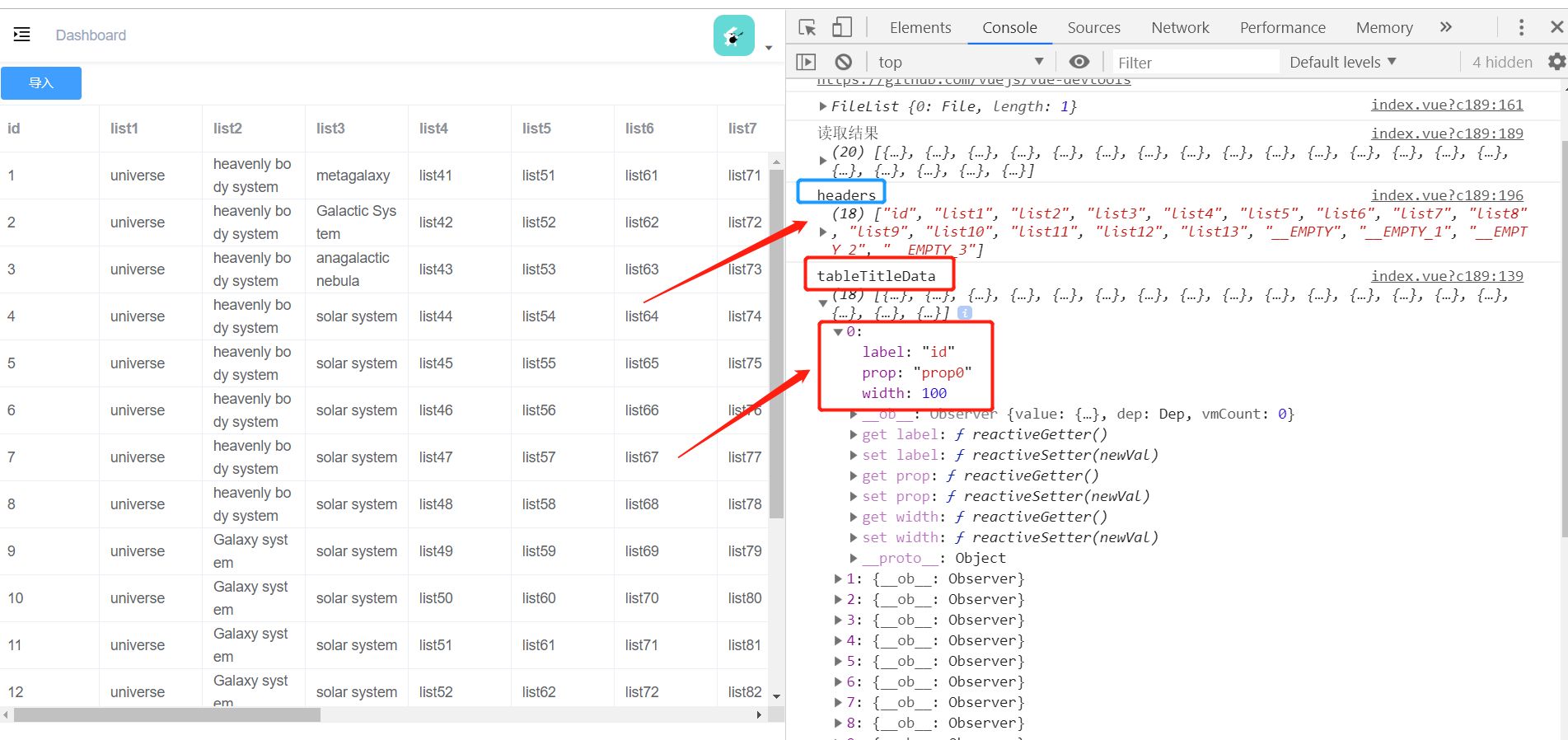
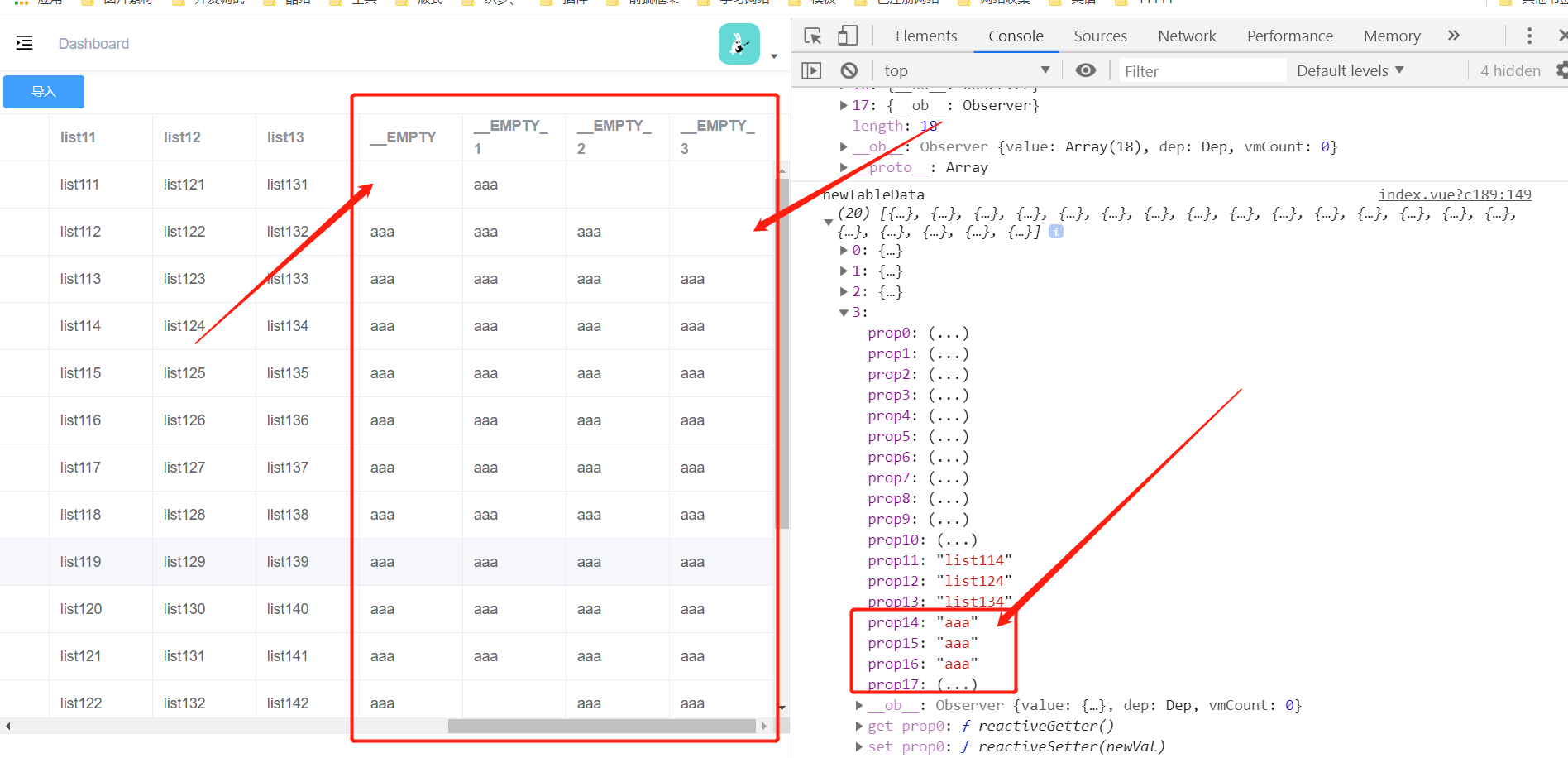
epilogue
This code supports irregular data. Those without header can also be rendered to the interface~~
Welcome to point out the error of my code~
If there is a better way to write, you are welcome to put forward it and make common progress~~